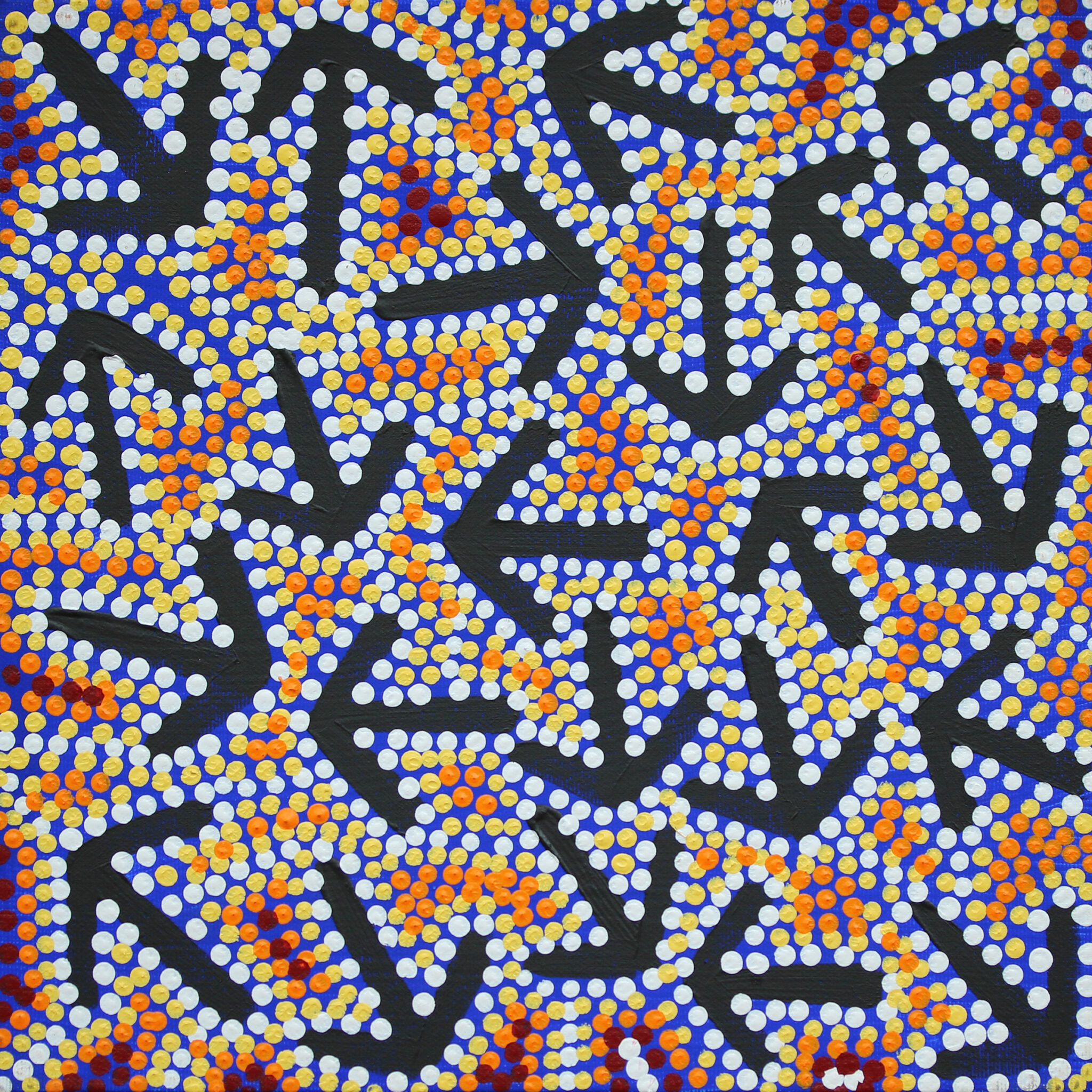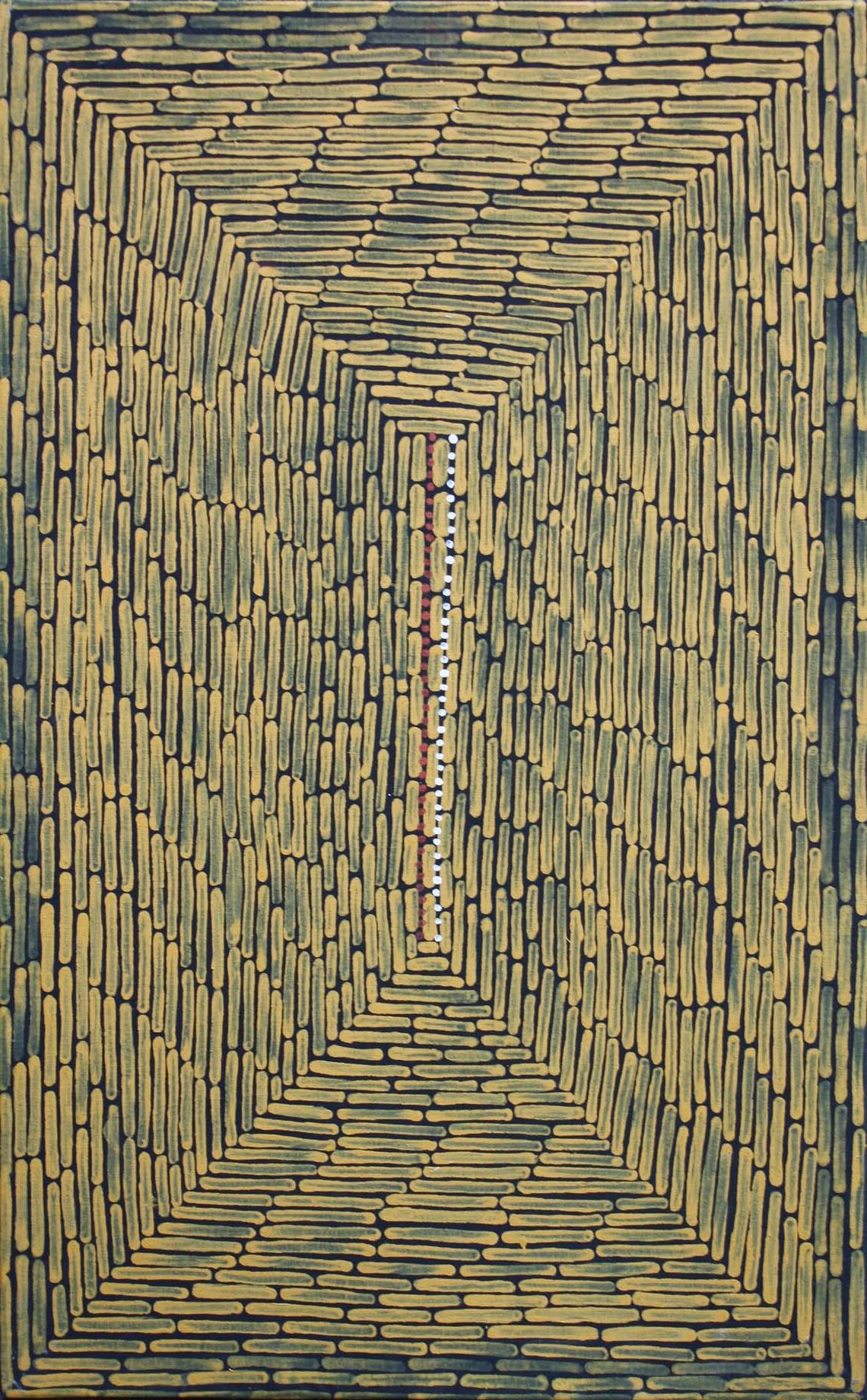Bessie Liddle
Details
Biography
Bessie Liddle was born at Middleton Ponds station, near Tempe Downs at the southern border of Hermannsburg, about 160 miles south west of Alice Springs (NT). Her father was a Pertame man and her mother a Luritja woman. Her early life was spent on Renners Rock station where her father worked as a stockman. Here Bessie learned traditional bush hunting and gathering. For ten years, on and off, the family camped near Hermannsburg (Ntaria) Lutheran Mission, either during drought times when work and bush tucker were scarce, as in 1937, or else to purchase supplies from the mission store. Bessie then attended the mission school, where she studied in the Aranda (Arrernte) and English languages. Mission classes also included drawing and singing (the Hermannsburg choir became as famous locally as its watercolour school). As early as 1913 the mission’s struggling economy had included the women’s thriving mail-order fancywork and tourist artefact industries and the men’s skin and tanning and mulga artefact businesses.
After the railway was extended to Alice Springs in 1929, the mission was visited regularly by artists seeking locations to sketch, including the well-known visits by Rex Battarbee (1932-34), who settled in Alice Springs in 1940, and less well-documented visits by Jessie Traill (q.v., 1928, 1932) and Violet Teague (q.v., 1933). In 1938 the educationalist and artist Frances Derham took groups of some eighty children, including Bessie, to Palm Valley specifically to execute commissioned sketches. It could be said that the mission’s rather pragmatic art programme benefited by these early ‘artist residencies’.
After Bessie married, she moved to her husband’s station and continued to work stock and be camp cook. Her three children were reared in the saddle. The family still holds coolamons she made in the 1950s. During the 1960s the station was used as a tourist lunch stop so, in addition to cooking, she again took up artefact production. With her husband (who died in October 1997), Bessie long taught culture and hunting to both Aboriginal and non-Aboriginal children and adults as a member of the teaching group Kami arangka, beginning with tourists to Uluru (Ayers Rock) in the 1950s and ’60s. In 1981, after moving to Alice Springs, she took a course in literacy at the Institute for Aboriginal Development. In 1986 she and four other women established Jukurrpa Artists Inc., a cooperative workshop, gallery and sales outlet at Alice Springs which now represents some 250 Warlpiri, Pitjantjatjara, Luritja, Anmatyerre, Arrernte and Pintupi women artists. It is the only gallery of its kind in Australia.
Artwork
-
29 Hunter St, Hobart 7000,
Tasmania, Australia - +61 3 6236 9200
- euan@artmob.com.au
Cash – locally only – up to $10,000 only. Layby facilities available. Card details can be advised securely using WhatsApp.
© Art Mob Pty Ltd, Aboriginal Fine Art Dealer, all rights reserved.


